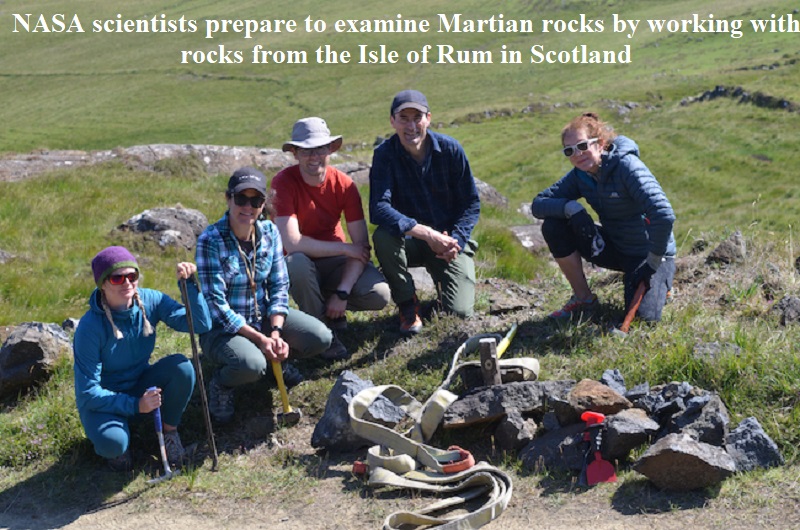
NASA, the renowned space agency of the United States, is currently preparing one of its spacecraft for the examination of Martian rocks. To practice various testing methods, scientists are using rocks from the Isle of Rum in Scotland. The igneous rocks on Rum have geological, mineral, and chemical content similar to those found on Mars. The Perseverance Rover, launched in 2020, is currently collecting rocks from the Séítah Formation within the Jezero crater on Mars, and these samples are expected to be returned to Earth by 2033.
Studying the Martian rocks could provide valuable insights into the evolution of the Red Planet. To understand the clues these rocks may hold and to minimize any potential wastage, scientists are conducting practice tests using rocks from Rum, the only UK site selected for sampling.
Dr. Lydia Hallis, a geologist and planetary scientist from the University of Glasgow, is leading the ‘Rum’ sampling project with the support of NatureScot National Nature Reserve (NNR). Lesley Watt, the reserve manager of Rum NNR, expressed fascination with the NASA/ESA mission and how the island of Rum is contributing to this historic endeavor to learn more about Mars.
The rocks from Rum serve as an excellent comparison to a specific geologic unit on Mars, the igneous Seitah Formation within the Jezero crater, which is characterized by the mineral olivine and has been explored and sampled by the NASA Perseverance Rover. Despite being younger geologically, the rocks on Rum have experienced a similar level of weathering to those on Mars due to exposure to Scottish elements.
The Mars Perseverance rover is the first phase of the international, interplanetary relay team tasked with collecting and caching samples on Mars. Subsequently, around 2023, a Sample Retrieval Lander is planned to land near the crater, carrying a small rocket to load the rocks collected by Perseverance.
In addition, two helicopters similar to Ingenuity would provide a secondary capability to retrieve surface samples on Mars. Once the sample cache is launched off the Red Planet, another spacecraft would capture it in Mars orbit and bring it safely to Earth in the early to mid-2030s, as informed by NASA.

Post Your Comments